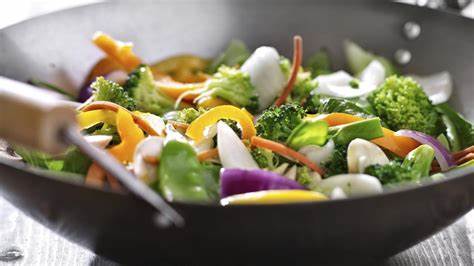On a regular weekend, Auntie Li was busy in her kitchen. Known for her exemplary cooking skills, her signature stir-fried dishes were particularly popular among friends and family. However, during a casual gathering, a nutritionist friend revealed the potential risks hidden in her stir-fry technique, leaving Auntie Li surprised and concerned. Could her long-standing cooking habits be endangering her family’s health?
The Popularity and Hidden Risks of Stir-Frying
Auntie Li’s dilemma is one that many home cooks might share. Stir-frying, renowned for being quick, convenient, and flavor-enhancing, has become a staple on our dinner tables. Yet, beneath this common cooking practice, there could be unnoticed risks.
Originating from China, stir-frying is celebrated for its swift and intense heat. The technique involves heating oil to a high temperature and quickly frying sliced vegetables, effectively sealing in nutrients and flavors. This seemingly straightforward method is, in fact, grounded in complex science.
The Science Behind Stir-Frying
First, stir-frying relies heavily on high temperature. When oil is heated to approximately 200 degrees Celsius, the moment vegetables contact the oil, the high heat causes the moisture on their surface to evaporate rapidly, forming a distinct ‘caramelization’ layer that imparts unique flavors to the food. However, this very process can also pose potential risks.
Second, the type and handling of oil directly influence the chemical reactions during stir-frying. Various oils have different smoke points and chemical stabilities. Exceeding an oil’s smoke point can not only alter the food’s taste but also produce compounds that may be harmful to health.
Third, the nature of the vegetables themselves is a crucial factor. Vegetables behave differently under high temperatures; for instance, those high in sugar might produce acrylamide, a known harmful substance, more readily.
Identifying Hazardous Substances
Through a detailed analysis of the stir-frying process, it becomes apparent that while quick and convenient, stir-fried vegetables might carry unseen risks. Ensuring health involves mastering the right stir-frying techniques. This practice is not only an art but also a science requiring diligent learning and application.

Acrylamide: The Hidden Temperature Trap
- Formation Principle: Acrylamide forms through the reaction of sugars and asparagine in food at high temperatures.
- Health Impact: Long-term consumption of acrylamide may increase the risk of nerve system disorders and certain types of cancer.
Polycyclic Aromatic Hydrocarbons (PAHs): The Inconspicuous Threat in Oil Fumes
- Formation Principle: PAHs form during incomplete combustion of organic materials in oils and vegetables at high temperatures.
- Health Impact: Accumulating these compounds in the body may lead to diseases in the lungs and digestive tract.
Nitrogen Oxides: The Invisible Assailants
- Formation Principle: High temperatures during cooking cause nitrogen and oxygen in the air to react and form nitrogen oxides.
- Health Impact: These compounds may irritate the respiratory system and prolonged exposure could lead to respiratory diseases.
Practical Advice for Healthy Stir-Frying
To mitigate the aforementioned risks, mastering healthy stir-frying techniques is key. Here are some practical tips to help enjoy delicious dishes safely:
- Control Oil Temperature: Maintaining oil temperature below 230°C can effectively reduce the formation of harmful substances. Use a thermometer to measure the oil temperature or judge by observing the oil’s fluidity.
- Choose Appropriate Cooking Oils: Opt for oils with high smoke points, such as sunflower oil or peanut oil, which remain stable at high temperatures and reduce harmful substance formation.
- Pre-treatment of Vegetables: Pre-treating vegetables, such as simple boiling or steaming, can remove some asparagine before stir-frying, thus reducing acrylamide formation.
- Balance Cooking Time and Heat: Short-time high-temperature stir-frying can maintain the vegetables’ nutrients and flavors while minimizing the generation of harmful substances.
By following the aforementioned advice, one can enjoy stir-fried vegetables while effectively reducing health risks. Crucially, healthy cooking is not just a technique but a reflection of a lifestyle attitude.

